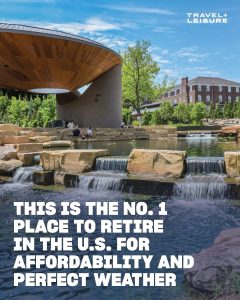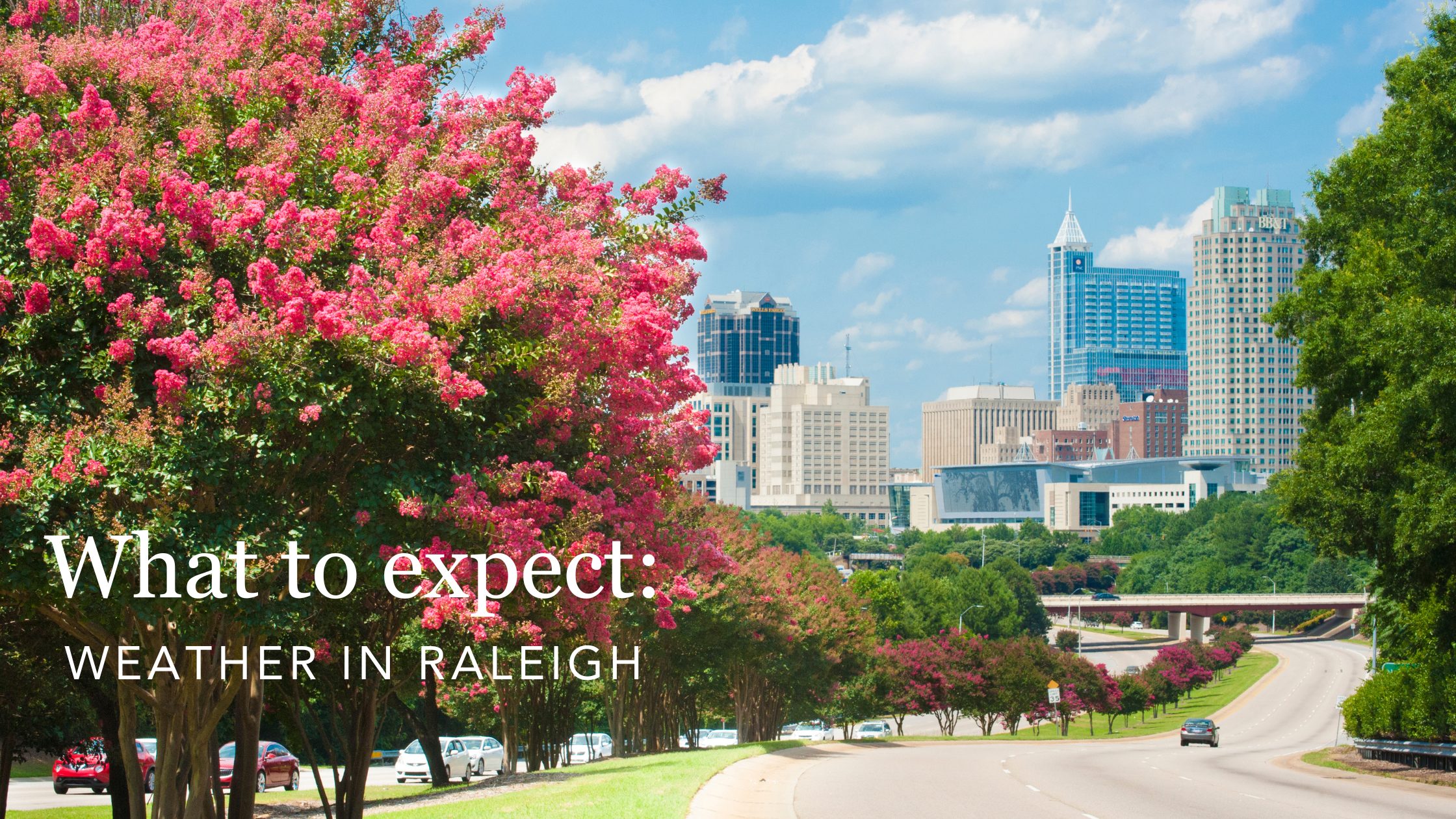Raleigh Weather: The Moderate Climate With a Few Surprises
Thinking of moving to Raleigh, North Carolina? One of the top reasons people choose this area is the weather. With four distinct seasons, mild winters, and plenty of sunny days, Raleigh offers a climate that’s easy to love.
Still, even in a place known for balance, the weather can occasionally surprise you.
Mild, Manageable, and Made for Living
Raleigh has what many consider an ideal climate. Summers are warm but not unbearable. Winters are short and rarely bring snow. Spring and fall are long, colorful, and comfortable. This balance makes it easy to enjoy outdoor living most of the year.
In July, high temperatures average around 89°F. In January, daytime highs stay near 51°F. That means you can often swap your snow boots for walking shoes—and that’s a big draw for many homebuyers and retirees.
Geography plays a role. Raleigh is far enough from the coast to avoid extreme humidity, but close enough to benefit from the warm influence of the Gulf Stream. That ocean current helps moderate temperatures across the region. Meanwhile, the Appalachian Mountains to the west shield us from many deep cold snaps.
When the Weather Takes Center Stage
While the overall climate is mild, Raleigh does experience the occasional extreme event. For example, the heat wave of 1983 brought record temperatures to the Southeast. In 2007, a severe drought combined with several 100°F days. And in January 2000, a snowstorm dropped over 20 inches of snow in parts of the Triangle.
This summer, we’ve seen another noteworthy event. A strong heat wave pushed temperatures into the mid-90s for several days. The heat index reached well above 110°F. High humidity made things feel even hotter, and overnight lows stayed unusually warm.
Events like this are becoming more common. Scientists say climate change is increasing the number of hot, humid days. Slow-moving weather systems and “heat domes” also make extreme conditions last longer. Fortunately, these are still rare—but they’re worth watching.
The good news is that these events may be more frequent but the risk they pose is mitigated by a solid power grid, water amenities like public pools, splash pads, and indoor shopping venues. Additionally most homes in Raleigh feature 1-2 car garages, making it easy in and out of your car.

Cary: A Nationally Recognized Retirement Spot
Raleigh’s neighbor, Cary, is also earning attention. In April 2025, Travel + Leisure magazine recently named Cary the best place in the U.S. to retire for affordability and… you’ve got it: great weather. That recognition reflects what locals already know: this part of North Carolina offers a high quality of life with a low level of climate stress.
Cary shares the same mild winters, warm summers, and balanced seasons as Raleigh. Combined with walkable neighborhoods, greenways, and modern infrastructure, it’s easy to see why so many people are making the move.
What This Means for Homeowners and Future Buyers
Even with the occasional cold snap or summer heat wave, Raleigh’s weather remains one of its strongest assets. We aren’t prone to heavy snow. We’re usually spared the full force of hurricanes. And we enjoy one of the longest growing seasons in the Southeast.
For homeowners, this means fewer weather-related maintenance surprises. For those planning a move, it means more days spent outdoors and fewer disruptions from extreme conditions.
Understanding our local climate—and how it’s changing—can help you make smart, informed decisions. Whether you’re buying your first home, downsizing, or relocating to be closer to family, Raleigh’s weather makes the transition easier.
Final Thoughts
The Raleigh area offers more than a good forecast. It offers a lifestyle. From the influence of the Gulf Stream to the natural protection of the mountains, the region is built for comfort. And while no place is perfect, this one comes close—especially when it comes to the weather.
Check the Forecast
Stay informed with local updates and radar: WRAL Weather | Current Conditions & Forecast


 Facebook
Facebook
 X
X
 Pinterest
Pinterest
 Copy Link
Copy Link
